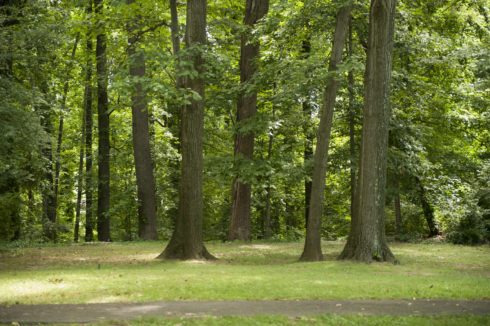
Report Tree Problems on Park Land
- How do I report tree related concerns on Parkland to Montgomery Parks?
Call the Montgomery Parks Customer Service at 301-495-2595 or for non-emergencies, email Customer Service at info@montgomeryparks.org or visit our webpage at Report Problem - Who is responsible for removing the tree or limbs that have fallen onto my property?
In Maryland, the general rule for fallen trees, or similar accidents that may be qualified as an “Act of God,” states that the affected owner is responsible for damages to their own
property, including cleanup, removal and related expenses. - What is the status of my existing work request?
Call or email Customer Service to get a status update. - Why doesn’t Montgomery Parks remove trees from private property?
The Arboriculture Section of the Montgomery Parks Department has a duty to inspect and mitigate risks associated with trees located on park property; especially, in and around
amenities or areas where we invite the public. In compliance with existing Maryland state laws it is not our duty to provide courtesy removal of trees and debris from private property.
Providing this service would tax our fiscal and human resources to a degree that would hamper our ability to inspect and maintain trees growing on Park property to levels that
meet our own expectations. - What is the process after a work request is created?
A Park Arborist Inspector will inspect the request within 30-45 calendar days. If tree maintenance work is determined necessary, the work is prioritized and scheduled with
respect to the tree crews work program. - How does the Park Arborist Inspector prioritize work requests?
The Montgomery Parks Department has an active policy to maintain the safety of Parkland from potential damages and/or injury resulting from trees considered to be a “high
risk” of failure. The Arboriculture Section strives to eliminate, in a timely fashion, any tree growing on Parkland that is deemed to be of high risk of failure. When available fiscal and
human resources limit the ability of the Parks Department to remove high risk trees on Parkland, priority is placed on trees deemed to be of the highest risk of failure i.e., trees in
need of “emergency” response. The standard for rating the risk of failure associated with any given tree is determined by Park’s Arborist Inspector with respect to their professional
experience and following the American National Standards Institute (ANSI) a300 Tree Risk Assessment Standard and the International Society of Arboriculture’s Best Management
Practices for Tree Risk Assessment. The Montgomery Parks Urban Forester administers the program and has final judgment in all matters concerning mitigation measures taken for any
tree deemed to be of “high risk” or “emergency.” - What is the timeframe for the completion of work?
There are 418 parks in Montgomery County which encompass over 36,000 acres of land. The Arboriculture Section consistently has hundreds of active work requests for tree work that
have already been inspected, prioritized and are waiting in the queue to be completed by our small staff of highly trained tree professionals. If the Park Arborist Inspector determines
tree maintenance work is needed, the estimated timeframe to complete the work is based on tree risk as outlined below:- “Critical Risk”: completed as soon as possible;
- “High Risk”: completed within 30 days;
- “Moderate Risk”: completed within 12 months;
- “Low Risk”: These times are approximate and may vary based on emergency work due to weather or storm events which can cause tree damage that may take priority over existing work requests extending the above timeframes.
- What does Montgomery Parks do with the woody debris after a tree is removed on Parkland?
Woody debris are the logs, branches and stumps that are left after a tree is removed. After removal of hazardous trees on Parkland, woody debris may be left onsite. Woody debris is generally removed in intensively maintained areas where there is active recreation and park maintenance. Woody debris is left onsite in areas such as forests and natural areas. Each site is evaluated at the time of removal to determine what level of debris removal is necessary. - Why is woody debris left onsite after tree removal?
- It is more cost and time efficient to leave debris than to remove it. These resource savings are used to remove additional high-risk hazard trees across the County.
- It is environmentally friendly in that it saves on fuel emissions from transporting and disposing of the debris
- It allows the debris to decay and recycle organic material back into the soil
- It minimizes disturbance to natural forest communities
- It can habitat for a variety of wildlife
- There may be no equipment access into the area
- How will the woody debris be left onsite?
When trees are removed in an area and woody debris is left, the visual aesthetic of that area will change. Because aesthetic opinion is highly subjective these areas may not always be visually appealing to everyone. To the best of our ability the woody debris is scattered so there are not significant piles of debris and larger logs will be made to lie flat on the ground. Moving of wood in an area is generally done by hand to minimize equipment disturbance to an area.